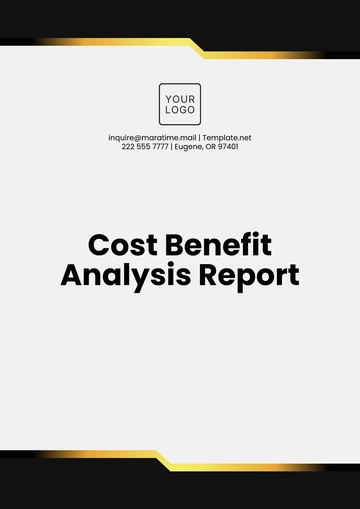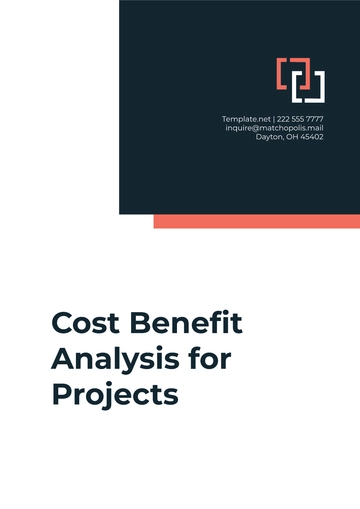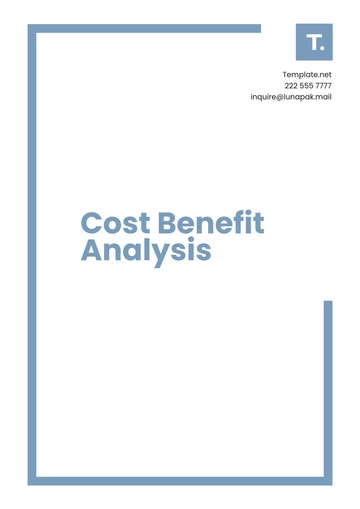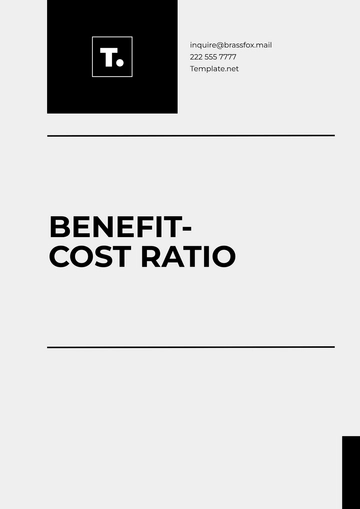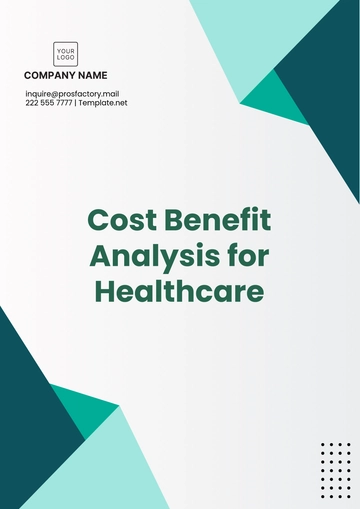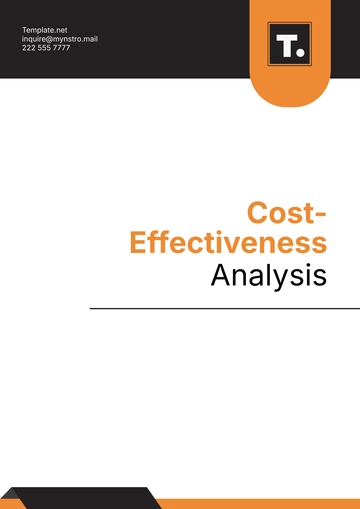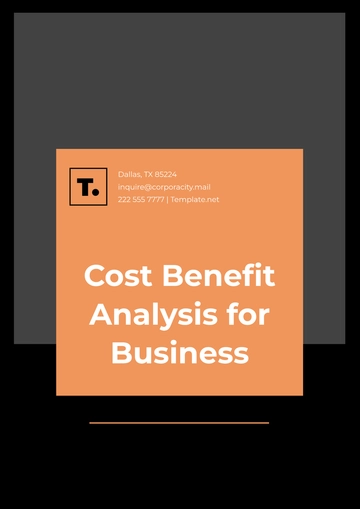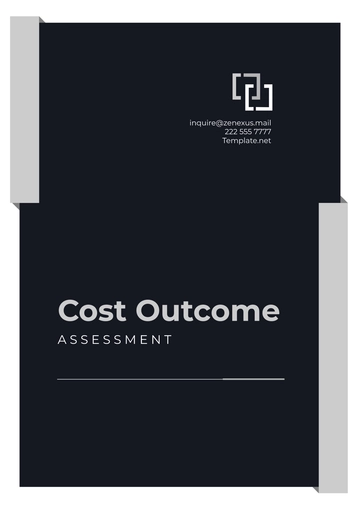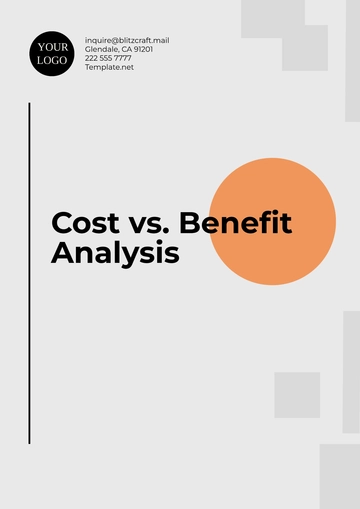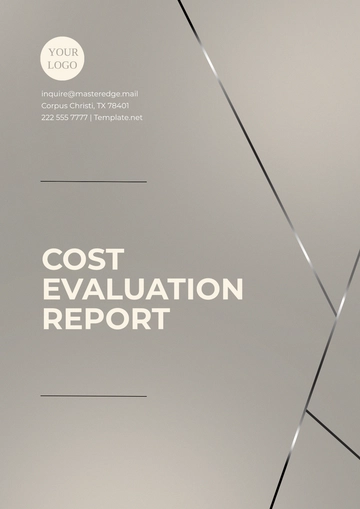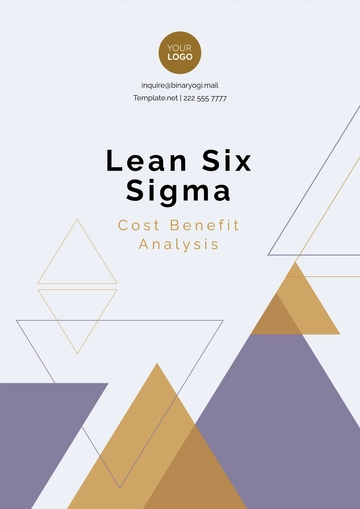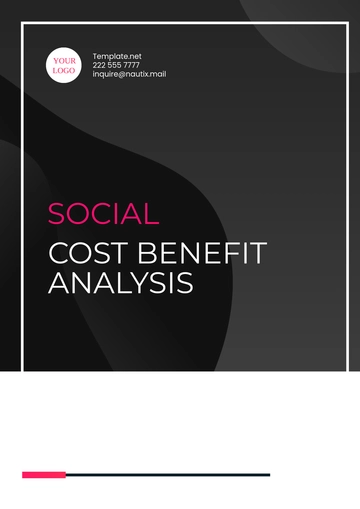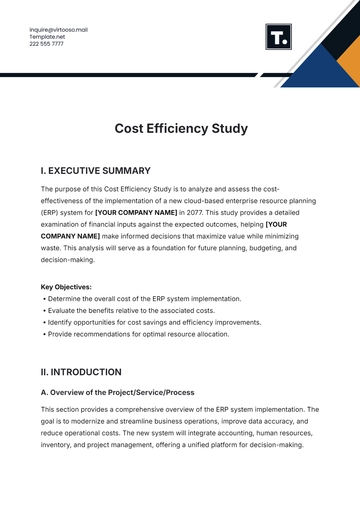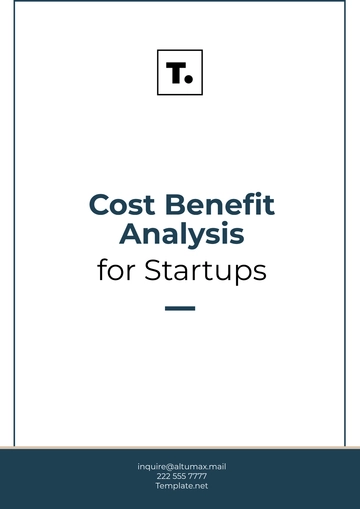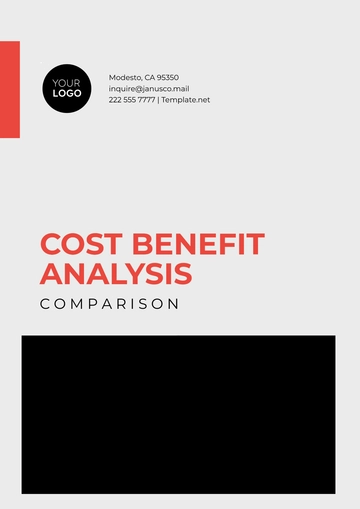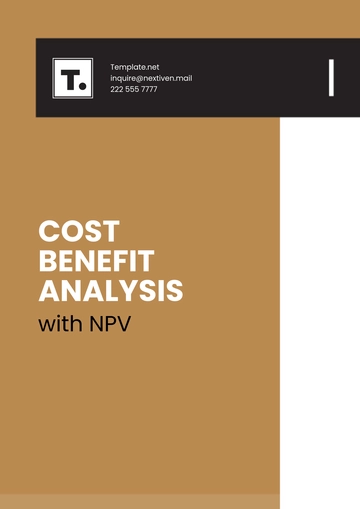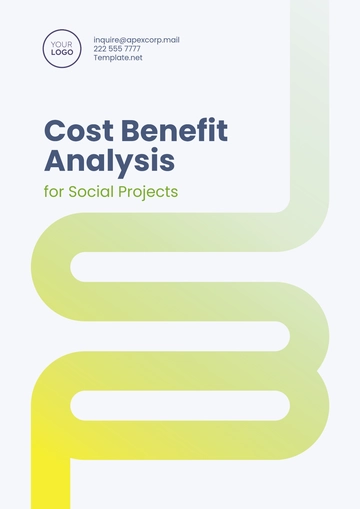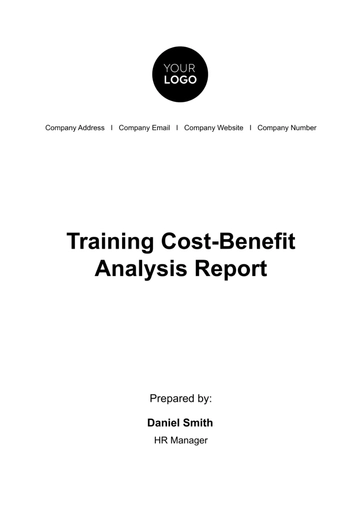Benefit Analysis
I. Introduction
A Benefit Analysis is a systematic approach to evaluating the advantages of a particular project, decision, or policy. This document outlines the potential benefits, both tangible and intangible, that an organization might realize upon the successful implementation of the proposed initiative. The purpose is to assist stakeholders in understanding the positive impacts, thereby guiding informed decision-making.
II. Executive Summary
In the proposed initiative to expand our [YOUR COMPANY NAME] operations to international markets in 2055, the primary benefits identified include increased revenue streams, market diversification, and enhanced brand recognition. The analysis indicates that these benefits will significantly contribute to the company’s long-term growth and sustainability.
III. Objectives of the Analysis
The objectives of this Benefit Analysis are to:
Identify and quantify the direct and indirect benefits of the proposed initiative.
Evaluate the short-term and long-term impact of these benefits on [YOUR COMPANY NAME].
Provide stakeholders with a clear understanding of the value proposition of the initiative.
IV. Methodology
The analysis was conducted using a mixed-methods approach, combining quantitative data analysis with qualitative assessments. Data was collected from internal financial reports, market research studies, and expert interviews. The Benefit-Cost Ratio (BCR) and Net Present Value (NPV) methods were used to quantify the benefits.
V. Identified Benefits
A. Financial Benefits
B. Strategic Benefits
C. Operational Benefits
VI. Benefit Quantification
This section presents the quantification of the identified benefits. It typically involves financial modeling and analysis to assign monetary values to the benefits, where possible.
Table 1: Quantification of Benefits
Benefit Type | Description | Year Achieved | Financial Value (USD) | Impact Duration (Years) |
|---|
Increased Revenue | Additional revenue from new markets | 2056 | 50,000,000 | 10 |
Cost Savings | Reduction in production expenses | 2057 | 15,000,000 | 5 |
Market Diversification | Reduced dependency on domestic sales | 2055 | N/A | 15 |
Brand Recognition | Enhanced global brand reputation | 2055 | N/A | Ongoing |
Improved Efficiency | Productivity increase | 2056 | 5,000,000 | 10 |
VII. Risk Assessment and Mitigation
While the benefits of the initiative are substantial, potential risks include market volatility, regulatory challenges, and operational complexities. To mitigate these risks, [YOUR COMPANY NAME] will implement a phased approach to market entry, conduct thorough market research, and engage with local regulatory bodies early in the process.
VIII. Conclusion and Recommendations
The Benefit Analysis indicates that the proposed initiative will yield significant financial, strategic, and operational advantages for [YOUR COMPANY NAME]. The benefits outweigh the associated risks, making it a viable option for enhancing the company’s market position. It is recommended that the initiative proceed with the proposed risk mitigation strategies in place.
Analysis Templates @ Template.net


